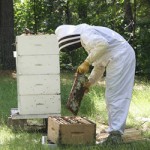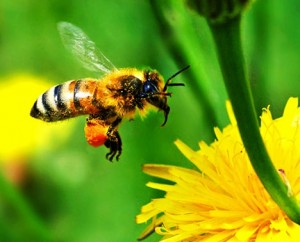 We have no way of knowing exactly when humans first began keeping bees but we can be sure that it has been a very long time. There are many references to bees in the Bible and in early texts by writers such Virgil who lived from B.C. 70 to 19. The oldest detailed pictures of beekeepers in action are from the Old Kingdom (2686–2160 B.C
)
of Ancient Egypt.
We have no way of knowing exactly when humans first began keeping bees but we can be sure that it has been a very long time. There are many references to bees in the Bible and in early texts by writers such Virgil who lived from B.C. 70 to 19. The oldest detailed pictures of beekeepers in action are from the Old Kingdom (2686–2160 B.C
)
of Ancient Egypt.
However, we know that honey was gathered long before the time of the Ancient Egyptians. As long as fifteen thousand years ago, ancient hunters recorded hunting scenes on cave walls (notably in South Africa, India and Valencia in Spain), including what appear to be scenes of honey gathering. This was an era of honey hunting and gathering rather than beekeeping. Honey hunting is still practised widely in parts of Africa, Asia and South America.
At some stage in the history of civilizations people come to rely less on hunting and gathering and more on farming, thus requiring them to establish more permanent places to live. This is when humankind would have discovered that bees swarmed and these swarms could be transferred into vessels of some sort and would remain and establish honey producing colonies.
The type and composition of the container used to keep bees in, varied from region to region, but they all had in
 common the fact that the honey comb could not be manipulated to examine activity inside the nest and removing the honey therefore also meant killing the bees. Beekeepers had to rely on annual swarming to restock their hives from season to season.
common the fact that the honey comb could not be manipulated to examine activity inside the nest and removing the honey therefore also meant killing the bees. Beekeepers had to rely on annual swarming to restock their hives from season to season.
It was not until the 1800`s that we see beekeeping as we know it today and the development of hives where honey could be consistently extracted without destroying the whole bee colony. Notably the Langstroth hive invented in 1851 meant that bees built honeycombs into frames which were designed to stop the bees cementing these frames to the side of the hive using a resinous substance they produce from plants, called propolis. The ability to move the frames without damaging the hive or destroying the bees allowed beekeepers to manage bees in way that had been near impossible up to that time.
This was the start of modern beekeeping as we know it and beekeeping has really changed very little since.

